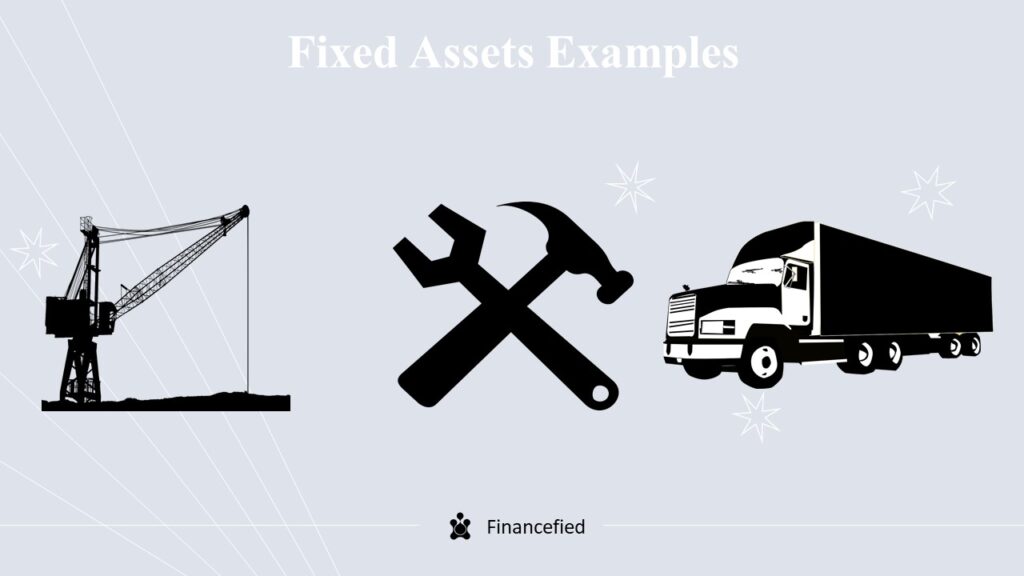Unlike current assets, fixed assets convert in the long run. The list below feature major fixed assets examples.

Fixed Assets Examples
- Properties
- Land and improvements
- Buildings and improvements
- Machinery and Equipment
- Furniture and fixtures
- Construction in progress
- Lease
- Goodwill
1. Properties
Property is what a company has possession and ownership of. It can be real estate property like land and buildings. It can also be intangible property assets like registered trademarks, copyright, and likes.
2. Land and improvements
Land is a real estate property that a company owns on which its builds and operates. Land is such an important asset because its value majorly keeps on appreciating. The location of land and its size dictate what a company can do with it. It is also dependent on the regulations that are there for land within a particular region.
Land improvements are the enhancements done in the land in question. For instance, landscaping a piece of land to make it appealing is considered an improvement. Fencing, creating a drainage system, and digging a waterhole are also land improvements.
3. Buildings and improvements
Buildings are the physical structures housing offices and work sites in general. Unlike land, buildings do depreciate with time. This is why the land is an exemption in the computation of the price of a building. As time passes by, buildings are valued, accounting for depreciation. Depreciation in a building is in the form of fading painting, rust of steel parts, and loosening of movable parts like doors and drawers, among others.
Improvements on buildings include but are not limited to installing better roofs, installing fire alarm systems, and repainting.
4. Machinery and Equipment
They are tools used in production, movements, and other related works. Some are heavy-duty and bulky, while others are light-duty and less bulky.
Machinery like production plants is bulky. They are also less mobile and best used while in a fixed position. Other, like motor vehicles, are mobile and used for movement within premises or distant places.
Some machinery and equipment are shared among workers. Sharing depends on the location of the office or worksite and the nature of the work in question. For instance, a stapler could be shared by workers in one office.
5. Furniture and fixtures
These are used to furnish officers and workstations. Furniture refers to those movable office furnishes; for instance, desks and chairs. Their arrangement is dependent on the preference of office occupiers.
On the other hand, fixtures are less movable because most are secured on walls. For example, drawers and shelves. Furniture and fixtures contribute to properly organizing office paperwork, file keeping, and other office valuables.
6. Construction in progress
This is an asset still in development. It cannot be acknowledged as a building because it is yet to house offices and other workstations. Construction in progress is not always about buildings. At times, construction could be on plants or even machinery.
When completed, construction in progress results in the establishment is buildings, machinery, furniture, fittings, and others.
7. Lease
A lease is a property a company possesses as a lessee, but ownership remains with the lessor. It occurs when the company does not own fixed assets used in operation. For example, a company may lease a plant in the short term. In the recordation of such a plant, it will be recognized under the leased asset.
As a lessee, a company finances the asset in question. They use it until such a time as agreed between them and the lessor.
8. Goodwill
It is a quantifiable reputation that a company/business has established over time. Goodwill is expensive in modern days. Companies correlate their goodwill with brand choice and repeat purchases. It majorly comes into the picture when a company is being sold.
